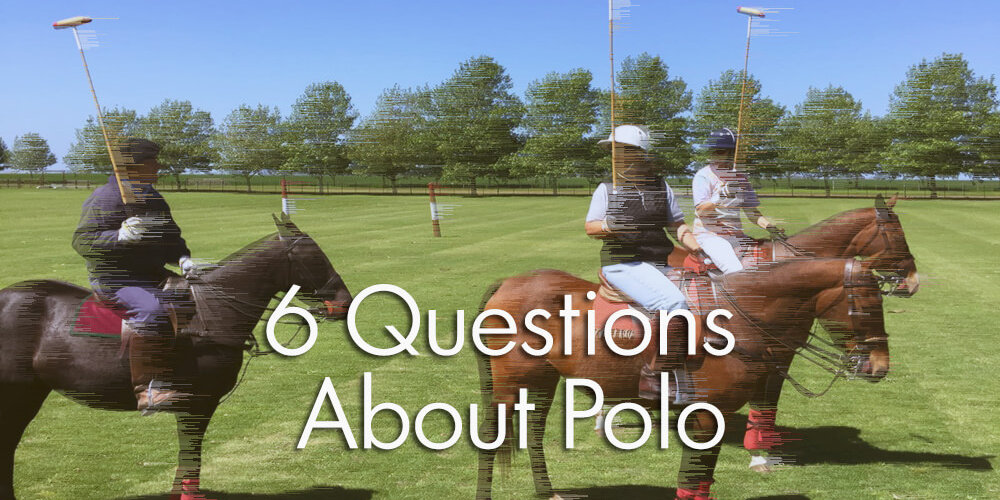If you’re just getting into the polo world there are a few questions you will be asking yourself. In here you will find some quick answers to all those interrogations. Let’s find out together more about this amazing sport, let’s play polo!
How to play polo?
This can be a really long answer but to keep it short all you need to know is that Polo is a sport that it is played between 2 opposing teams and the objective is to score goals, using a wooden mallet to hit a ball through the other team’s goal post.
The one that makes more goals in a certain amount of time, wins.
And yes, it’s played on horseback. All players likewise the umpires, ride horses (that are changed during the match, don’t worry).
How long are polo matches?
Each game tends to last between one to two hours and it’s divided into periods called chukkers (chukkas).
A chukker last seven and a half minutes each and depending on the type of polo that’s being play and the level, a game can have between four and eight chukkers.
– So… why a game can last two hours if every chukker lasts almost eight minutes?
Well, every time there is a foul (violation of the rules of play), the clock stops so this pushes the timing out, making it last longer.
How many players are on a polo team?
Polo is played between two teams of four people each. Yes, you will also find that in the arena polo there are only 3 people in each team but that doesn’t happen in grass polo.
All the players have a position with certain responsibilities:
- One is the most offence oriented position on the field.
- Two has an important role in offence, either running through and scoring themselves, or passing the ball.
- Three is a pivot position and the player must be a long powerful hitter to feed balls to the other teammates as well as being able to build a solid defence.
- Four focus on defence. They can move anywhere on the field, but they usually try to prevent scoring.
What is a handicap in polo?
This number that you see next to a polo player’s name is an estimation of it’s worth to his or her team. It’s an overall rating of different skills that polo players have, like knowledge of the game, strategy, horses, etc.
Handicaps, depending on the country, go from -2 up to 10 goals.
All teams have a total handicap that’s the sum of all members handicap. This is helpful for playing tournaments as the Team Handicap must meet the level they’re willing to play (low, medium or high goal).
Every player gets an individual handicap depending on performance (that can raise or lower). Handicap commissions of the national associations meet several times a year to decide players’ handicaps.
How long are polo fields?
A grass polo field is 300 yards long and 150 yards wide. Metric system?: 274.32 meters long and 137.16 meters wide, you’re welcome.
They’re long. If you want to compare to a soccer field, for 11 players a side is 115 yards (105m) long and 75 yards (68.5m) wide.
Where can I play polo?
If you’re a beginner or you didn’t play before, we’ll recommend you to look out for polo clubs near you. They sometimes offer polo classes or training to start with.
But if you’re looking for more adventure you can visit our Polo School in Argentina where we will be more than happy to help you with this sport as it’s something we have been doing for over 30 years. And hey, this is Argentina, where the best polo players come from!
Who makes polo rules?
Well, this depends on which country you’re playing or watching polo. You can find more information on this on each polo association website.
In Argentina, we have the AAP (Argentine Polo Association)
For the United Kingdom, you can find the HPA (Hurlingham Polo Association)
USA have the USPA (The United States Polo Association)
Was it helpful? If you want to know more, you can find interesting these other articles about polo: Polo Gear: Equipment for Horse & Rider, Quick History of Polo, What to Pack for a Polo Holiday?.








